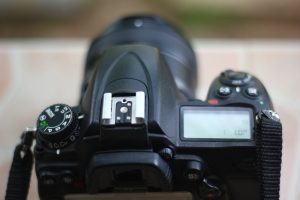 It’s never been easier to go out and shoot video of your own. Gone are the days of over-sized cameras, bulky editing equipment, and the generally cost-prohibitive nature of the video-shooting process. You can even shoot solid video on your phones. If you’ve got a little bit of money to spare, DSLR cameras are nifty products that shoot excellent video for a reasonable price. This is the future! However, the future is not entirely foolproof. There are still plenty of ways to screw up the video you’re shooting. So, to help you avoid any facepalm moments while reviewing your footage after the fact, here are 5 things you must check when shooting video with a DSLR.
It’s never been easier to go out and shoot video of your own. Gone are the days of over-sized cameras, bulky editing equipment, and the generally cost-prohibitive nature of the video-shooting process. You can even shoot solid video on your phones. If you’ve got a little bit of money to spare, DSLR cameras are nifty products that shoot excellent video for a reasonable price. This is the future! However, the future is not entirely foolproof. There are still plenty of ways to screw up the video you’re shooting. So, to help you avoid any facepalm moments while reviewing your footage after the fact, here are 5 things you must check when shooting video with a DSLR.
1. F-Stop
The f-stop on a DSLR camera relates to how wide open your camera’s aperture is. The wider the aperture, the more light the camera takes in. More light exposure means more data for the camera. This leads to sharper images. However, too much light and the image becomes washed out. Remember, the lower the f-stop number, the wider the aperture. The wider the aperture, the more light you get.
2. Frame Rate
Most DSLR’s have three options for frame rate: 24 fps (frames per second), 30 fps, and 60 fps. The first option, 24, will give you a more cinematic quality. The second, 30, is standard for broadcast, and 60 can be used to capture extensive motion.
3. Shutter Speed
Once you decide on a frame rate, make sure you check the shutter speed. As a general rule, your shutter speed should be twice your frame rate. Your environment may affect which shutter speed you can use, however. At higher shutter speeds, light sources like televisions and fluorescent tube lights can cause a flicker in your image. Taking a sample video is always a good choice.
4. White Balance
You’ve probably seen plenty of video that wasn’t properly color balanced. Shooting by a window gives the footage a blue tint, or overhead lights cause an orange glow. This is why setting a manual white balance is vital for shooting video. Find a white piece of paper and use it to balance your camera in whatever light you want to shoot in. This will save you lots of time in post production.
5. Aspect Ratio and Definition
This is a bonus two-fer because these settings often appear as a single option on DSLR cameras. What aspect ratio are you shooting for? The two common ratios are 16:9 (wide) and 4:3 (full). Most likely you’ll want to use 16:9. Then check the definition. Do you want to shoot in HD or SD? High definition is ideal for image quality, but each video you take will consume more memory.
Ready to Take Your Video to the Next Level?
While shooting with DSLR cameras is a practical way to take great video on your own, for serious projects, consider a professional! Doug Davis is a professional photographer and videographer working in Dallas. Through over twenty years of experience he has helped clients both large and small tell their stories with a variety of visual media. To get a professional involved on your next video project, contact Doug at D-Squared Studios in Dallas, TX at 214-746-6336.
